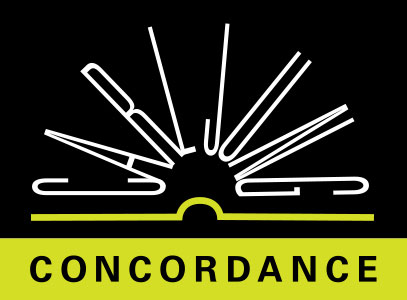This is the almost worldwide myth of the typical deed of the hero. He journeys by ship, fights the sea monster, is swallowed, struggles against being bitten and crushed to death (kicking or stamping motif), and having arrived inside the “whale dragon,” seeks the vital organ, which he proceeds to cut off or otherwise destroy:
The monster begins the night sea journey to the East, i.e., towards sunrise, while the hero is engulfed in its belly:
FROBENIUS DESCRIBES THE JOURNEY
REGRESSION OF LIBIDO IS NOT
Frobenius describes the hero's journey as going through eight stages:
CW5 ¶ 310NECESSARILY RETROGRADE
The hero is devoured by a water-monster in the West (devouring stage)
CW5 ¶ 310This seems to indicate that regression [of libido] is not necessarily a retrograde step in the sense of a backwards development or degeneration, but rather represents a necessary phase of development
CW8 ¶ 69The animal travels with him to the East (sea journey stage)
CW5 ¶ 310The hero's journey symbolizes the effort to adapt to the conditions of the psychic inner world
CW8 ¶ 68Meanwhile the hero lights a fire in the belly of the whale (fire-lighting stage)
CW5 ¶ 310The hero feels hungry and cuts himself a piece of the heart (cutting-off of heart stage)
CW5 ¶ 310Soon afterwards, he notices that the fish has glided on to dry land (landing stage)
CW5 ¶ 310He immediately begins to cut open the animal from within (opening stage)
CW5 ¶ 310Then he slips out (slipping out stage)
CW5 ¶ 310It was so hot in the fish's belly that all his hair has fallen out (heat and hair stage). The hero may at the same time free all those who were previously devoured by the monster, and who now slip out too ( Frobenius, Das Zeistalter des Sonnengottes, p. 421 )
CW5 ¶ 310THE MEANING OF THE BATTLE
WITH THE SEA MONSTER
It is easy to see what the battle with the sea monster means: it is the attempt to free the ego-consciousness from the deadly grip of the unconscious. The making of a fire in the monster's belly suggests as much, for it is a piece of apotropaic magic aimed at dispelling the darkness of unconsciousness
CW5 ¶ 539Often the monster is killed by the hero lighting a fire inside himthat is to say, in the very womb of death he secretly creates life, the rising sun
CW5 ¶ 538The rescue of the hero is at the same time a sunrise, the triumph of consciousness (fig. 033)
CW5 ¶ 539145 CW5 Ser: 16 Par 539 (d) FigNo 033
Thus the fish dies and drifts to land, where with the help of a bird the hero once more sees the light of day
CW5 ¶ 538The bird probably signifies the renewed ascent of the sun, the rebirth of the phoenix, and is at the same time one of those “helpful animals” who render supernatural aid during the birth: birds as aerial beings, symbolize spirits or angels
CW5 ¶ 538Divine messengers frequently appear at these mythological births, as can be seen from the use we still make of god-parents
CW5 ¶ 538The sun-symbol of the bird rising from the water is preserved etymologically in the idea of the singing swan. `Swan' derives from the root sven, like `sun' and `sound'
CW5 ¶ 538This ascent signifies rebirth, the bringing forth of life from the mother, and the ultimate conquest of death, which, according to an African Negro myth, came into the world through the carelessness of one old woman: when the season of universal skin-casting came round again (for in those days people renewed themselves by casting their skins like snakes), she was absent-minded enough to put on her old skin instead of the new one, and in consequence died
CW5 ¶ 538The myth often spans a period of three-days. The “three-days” are a stereotyped expression for the “night sea imprisonment” (December 21-24). Christ, too, spent three days in the underworld
CW5 ¶ 512OTHER VERSIONS
OF THE MYTH
The myth is exemplified in the battle of Hiawatha with Mishe-Nahma, the fish-king.Mishe-Nahma is a monster fish who lives at the bottom of the waters. Challenged to battle by Hiawatha, he swallows the hero together with his boat
CW5 ¶ 537Unfortunately, however, this heroic deed has no lasting effect. Again and again the hero must renew the struggle, and always under the symbol of deliverance from the mother
CW5 ¶ 540Just as Hera, in her role of the pursuing mother, is the real source of the mighty deeds performed by Heracles, so Nokomis allows Hiawatha no rest, but piles up new difficulties in his path, hazardous adventures in which the hero may be victorious, but may also meet with his death
CW5 ¶ 540Man with his consciousness is always a long way behind the goals of the unconscious; unless his libido calls him forth to new dangers he sinks into slothful inactivity, or in the prime of life he is overcome with longing for the past and is paralysed
CW5 ¶ 540But if he rouses himself and follows the dangerous urge to do the forbidden and apparently impossible thing, then he must either go under or become a hero
CW5 ¶ 540The mother is thus the daemon who challenges the hero to his deeds and, as with Isis, lays in the hero's path the poisonous serpent that will strike down Ra
CW5 ¶ 540